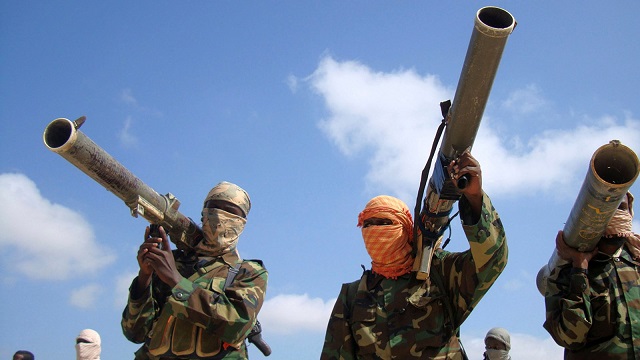
Here’s what you should know about terror alerts
Kenya remains in a state of heightened alert following travel warnings by French, U.S. and European Union officials of imminent terrorist attacks. Kenya has suffered deadly terror attacks claimed by the Somali Islamist group Al-Shabaab. As a result it has beefed up security. Oscar Gakuo Mwangi, Associate Professor, Political Science, National University of Lesotho, has studied Kenya’s counter-terrorism policies and strategies. We asked him to unpack the intelligence behind terror alerts.
How is intelligence on impending terrorist attacks gathered?
Cooperation between governments and security agencies is a crucial element in combating terrorism. This is more so for transnational terrorism. Effective inter-agency cooperation depends on the timely and accurate sharing of intelligence through established channels. Kenya cooperates with various Western countries to arrive at the conclusion that a terror attack is imminent. For instance Kenya and the UK have a mutual agreement to counter Al-Shabaab’s threat. The two countries share information and identify new ways to disrupt the group’s operations in East Africa and beyond. The UK and Kenya gather information in a number of ways. These include covert human intelligence sources, directed surveillance, intercepting communications, data obtained from communications service providers, bulk personal data, intrusive surveillance and equipment interference. The National Counter Terrorism Centre also provides online channels where the public can, anonymously, report terrorism-related activities. Kenya’s government also cooperates with the U.S. For instance the General Service Unit counterterorrism response team is funded by the U.S. In addition, information on imminent attacks is also provided by terrorist groups themselves. As part of its publicity, Al-Shabaab provides information on imminent attacks through its media outlet, Al-Kaitab Media Foundation. Individual states are responsible for providing travel advisories to their citizens based on the information shared.
How reliable is the intelligence prompting alerts?
Sound intelligence research and analysis identifies trends and specific terrorist groups’ strategies and tactics. For the most part this means that sufficiently reliable data on imminent attacks is produced. However, it’s not a perfect science. Intelligence sources sometimes offer opinions rather than hard evidence. Hence the analysis can at times be subjective rather than objective.
The reliability of the intelligence is determined by how correct or true the information is. The UK’s MI5, for example, records credible intelligence correctly by recording its origin and validity. Assessments of valid threats are regularly adjusted in view of new intelligence. But terrorist groups behave in unpredictable ways. Some terrorist attacks are commemorative, that is to celebrate prior successful attacks. Attacks can be symbolic, intended to advance ideological aims and objectives. They can also be carried out in response to the target state’s counter-terrorism interventions. Diplomatic advisories or alerts are adjusted frequently as they are based on security information that is constantly changing.
In the case of Kenya, terror threat warnings have been vindicated time and again. Between January 2019 and December 2021, the U.S. government published nine travel advisories and alerts warning of terrorist attacks around the Kenya-Somalia border and the country’s coastal areas. During this period, five attacks and two foiled attacks were reported in these areas. On January 5, 2022, the U.S. embassy in Nairobi issued a travel advisory to U.S. citizens warning them not to travel to some coastal areas because of terrorism. Kenya has since witnessed attacks conducted by Al-Shabaab in the coastal county of Lamu.
Why are alerts usually general, rather than specific?
It is often difficult to predict an imminent terrorist attack in a place or time. Terrorism, as a special form of political violence, is a complex and dynamic phenomenon. Its strategies and tactics rapidly keep mutating to adapt to changing local-level, national, regional and international circumstances. The tactics have been described as asymmetric warfare – they are both ideological and military. The unconventional tactics aim at winning over marginalised local-level communities. Asymmetric warfare is therefore long-term and more sustainable than conventional warfare. The unpredictability of this type of warfare based on ideological motives is a key defining feature of terrorism as a special form of political violence. Hence forecasting terrorism is problematic. The more complex a terrorist group is in terms of organisation and ideology, the more difficult it is to predict its strategies and tactics.
What steps should the public and security forces take?
The public, once aware of the threats, are supposed to take precautions. These include avoiding crowded public spaces and avoiding specific areas where prior attacks have occurred. The public should perceive these alerts and react to them in a positive rather than negative way. The primary responsibility of securing oneself begins with the individual. It is also the responsibility of the state to provide basic security. The government should take additional security measures. Measures include additional installation of surveillance cameras, scanners, security barriers, and enhancing visible policing. But a robust security response risks unintended consequences. For example, certain areas can become viewed as hotspots of terrorism. Communities in these areas can be unfairly profiled as ‘suspects’. This has a tendency of increasing suspicion and distrust, including intolerance between communities. Security actors should also avoid employing repressive counter-terrorism operations that target specific individuals and communities who live in volatile areas. Such operations only serve to entrench perceptions about human rights violations committed by the state.
The state and its security agencies should react to alerts using alternative methods. These include preventing and countering violent extremism and employing soft approaches. These are often ideological, communicative and social. They are based on trust not fear.
****
 The Independent Uganda: You get the Truth we Pay the Price
The Independent Uganda: You get the Truth we Pay the Price



